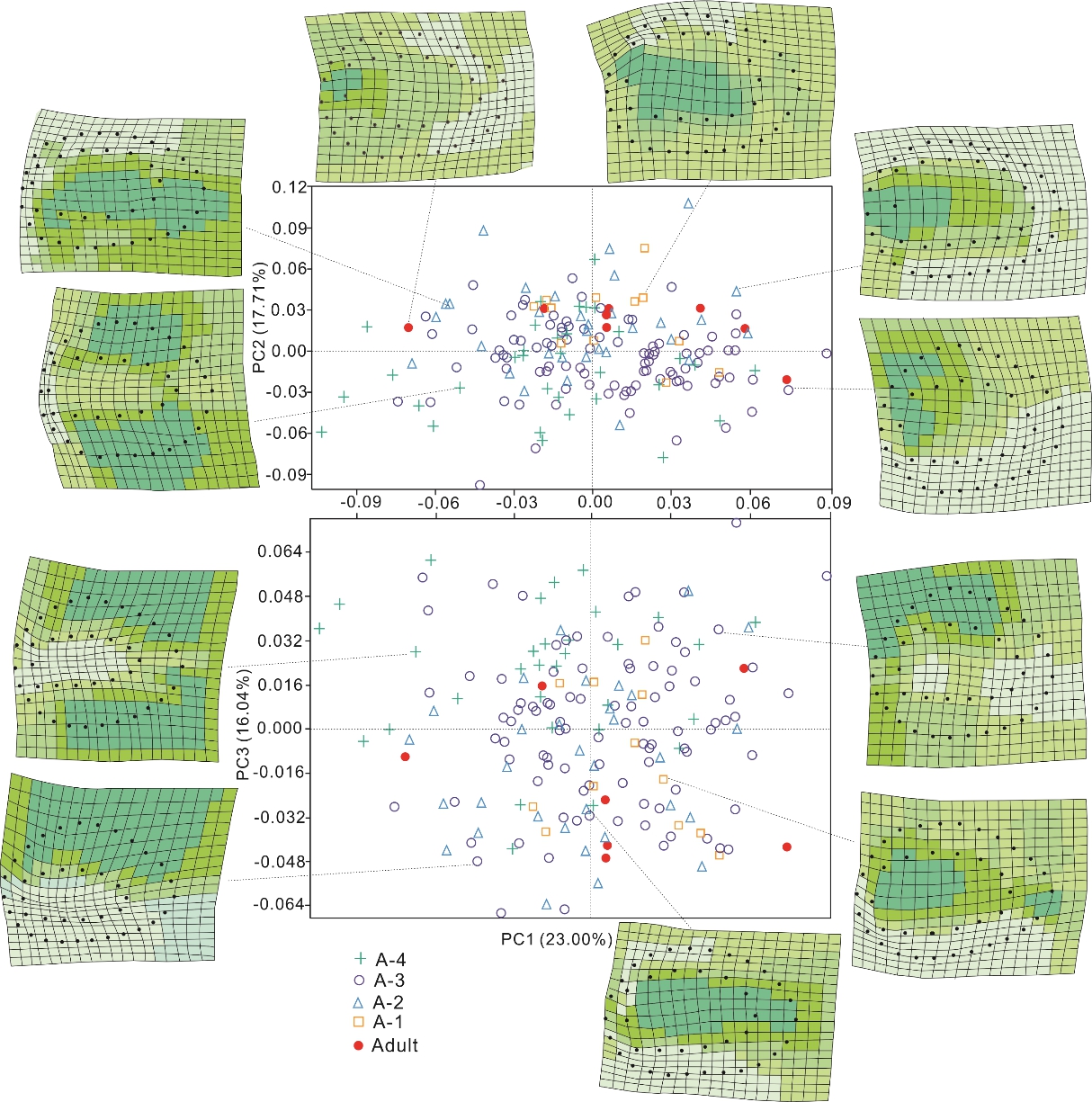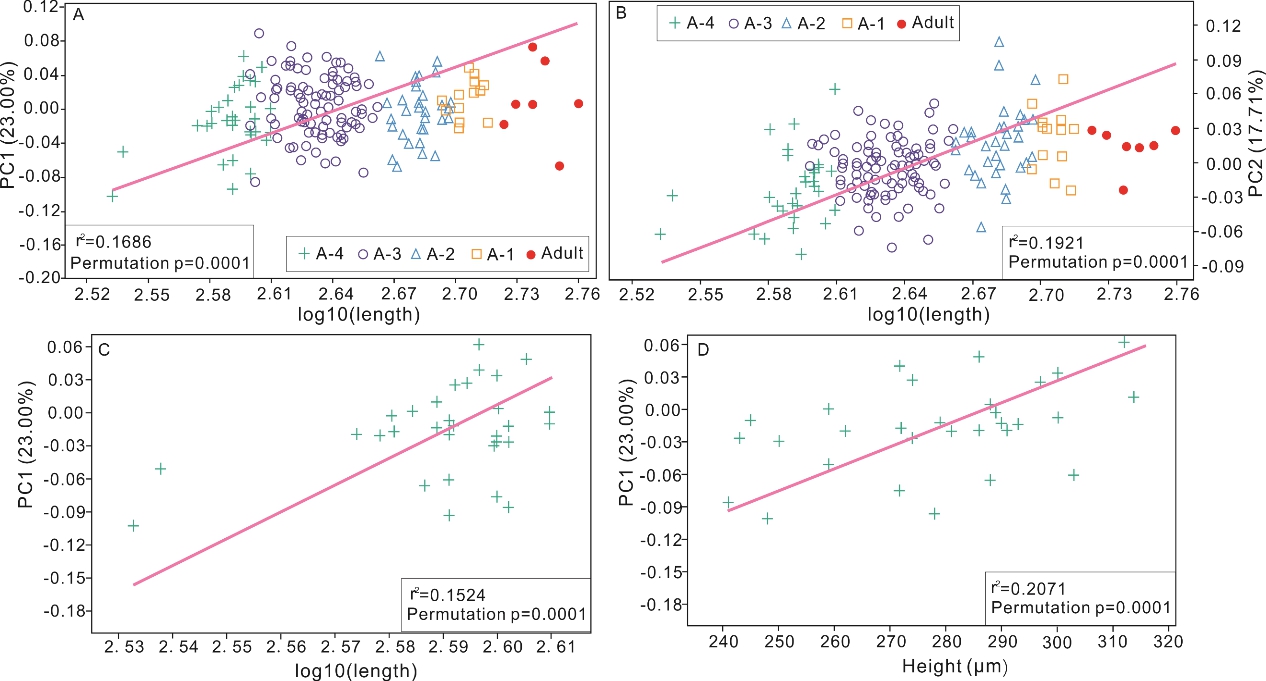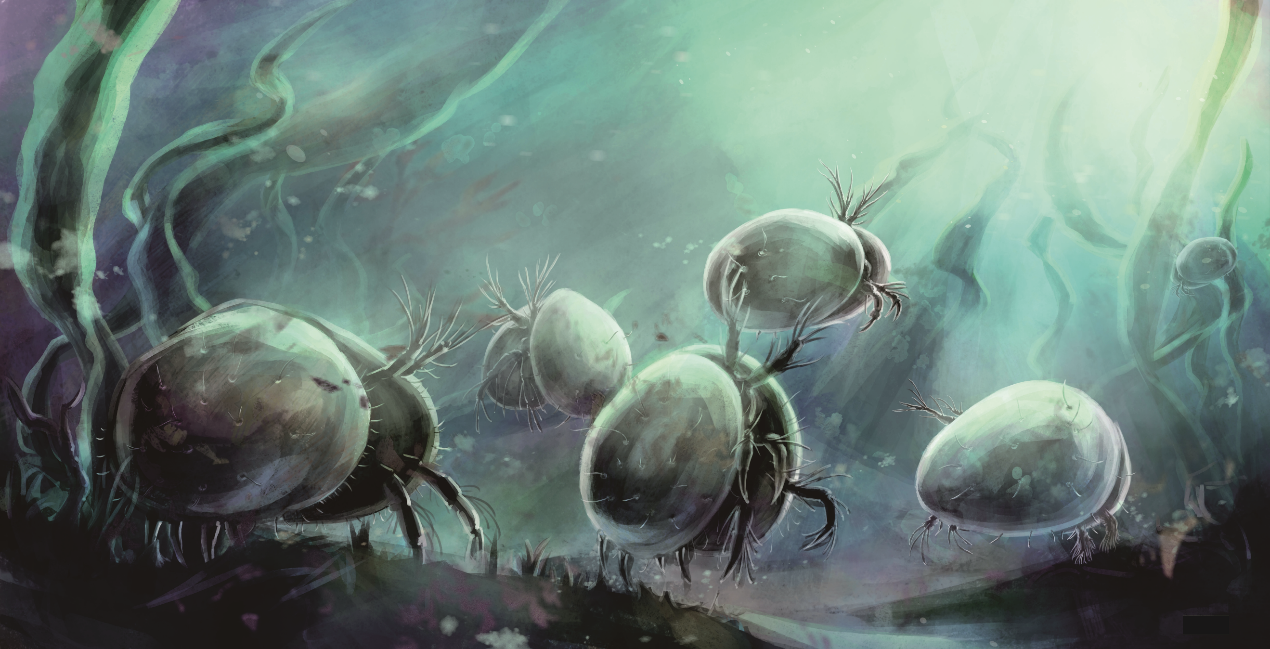Recently, Papers in Palaeontology represents the first study of morphological variation in Cribroconcha honggulelengensis using a geometric morphometric approach and demonstrating allometric growth patterns for this species. This study also makes comparisons with the ontogeny of extant ostracods and investigates the control factors of Ostracoda ontogeny. Ostracoda is one of the most widespread and diverse groups of crustaceans occurring since the Early Ordovician with many thousands of described fossil species. However, despite being the most abundant ostracods during the Palaeozoic, the Subclass Podocopa remains poorly resolved (especially for the order Platycopida) in respect of its origin, evolution, ontogeny and phylogeny, due to the lack of soft-part and molecular evidences.
Dr. SONG Junjun, Prof. HUANG Bing and Prof. QIE Wenkun from Nanjing Institute of Geology and Palaeontology, Chinese Academy of Sciences (NIGPAS) made a thorough analysis of Cribroconcha honggulelengensis, which is a typical Platycopida species in the Late Devonian.
In this study, a total of 178 specimens of C. honggulelengensis from the Upper Devonian Hongguleleng Formation of the Bulongour section in western Junggar, northwest of Xinjiang Uygur Autonomous Region (referred to as Xinjiang), NW China, were carefully selected. A combination of landmarks and semilandmarks were used to cover as many morphological details as possible for the geometric morphometric analysis. Five growth stages (i.e., Adult, from A-1 to A-4) of C. honggulelengensis have been recognized according to the result of Kernel density map combined with the length/height scatter plot. There is a strong relationship between shape and size, with juvenile specimens (from the stages A-4 to A-2), exhibiting higher variability in shape. During the early molt phase, the juveniles have rounded anterior and posterior borders with an ovate outline, while small and rare pores locate in the posteromedian of carapaces. As the valve grows larger, carapaces elongate with small radius of curvature at anterior and posterior borders, and the pores-transverse ridges area expands drastically, including large and dense pores.
Compared with the living ostracods, the researchers made functional morphological analysis of C. honggulelengensis and deduced that as the ontological variable changes, its body plan may have changed in a direction that make it more favorable, namely, forage more efficiently and to flee from predators more quickly. The distinct ontogenetic shifts in C. honggulelengensis of the first allometric phase (i.e., stages A-4, A-3) and second allometric growth phase (i.e., Stage A-2) show that shape variation may be not only a result of genetic homogeneity, but also a response to environment adaptation for salinity, oxygenation and water energy.
In this study, the researchers incorporate as much quantitative shape information as possible from the Late Devonian ostracods for the first time by applying the geometric morphometrics, and it will encourage the use of geometric morphometric analyses in ostracodology and other microfossils, especially for the Palaeozoic ostracods.
This research was supported by the National Natural Science Foundation of China, and the Strategic Priority Research Program of the Chinese Academy of Sciences.
Reference: Song, J. J. *, Huang, B., Qie, W.K., 2023. Allometry in Late Devonian Podocopa ostracods (Crustacea) and its implications for ostracod ontogeny. Papers in Palaeontology, e1480, https://doi.org/10.1002/spp2.1480.

Fig. 1. Kernel density maps with the Length/height scatter plot (A) showing the growth stages (B) of Cribroconcha honggulelengensis Song & Crasquin, 2017 (178 specimens) in the Upper Devonian Hongguleleng Formation of western Junggar, NW China.

Fig. 2. Plots for PC 1–2 (A) and PC 1–3 (B) of the Principal component analysis of the shape of right later view of Cribroconcha honggulelengensis Song & Crasquin, 2017 (178 specimens) in the Upper Devonian Hongguleleng Formation of western Junggar, NW China, visualizing shape variation by thin plate splines.

Fig.3. The linear regressions of the shape with length (A, B, C) and height of the stage A-4 (D).

Fig.4. Ecological reconstruction and life mode interpretation of Cribroconcha honggulelengensis Song & Crasquin, 2017 in the Upper Devonian Hongguleleng Formation of western Junggar, NW China
Contact:
LIU Yun, Propagandist
Email: yunliu@nigpas.ac.cn
Nanjing Institute of Geology and Palaeontology, Chinese Academy of Sciences
Nanjing, Jiangsu 210008, China
Download:
